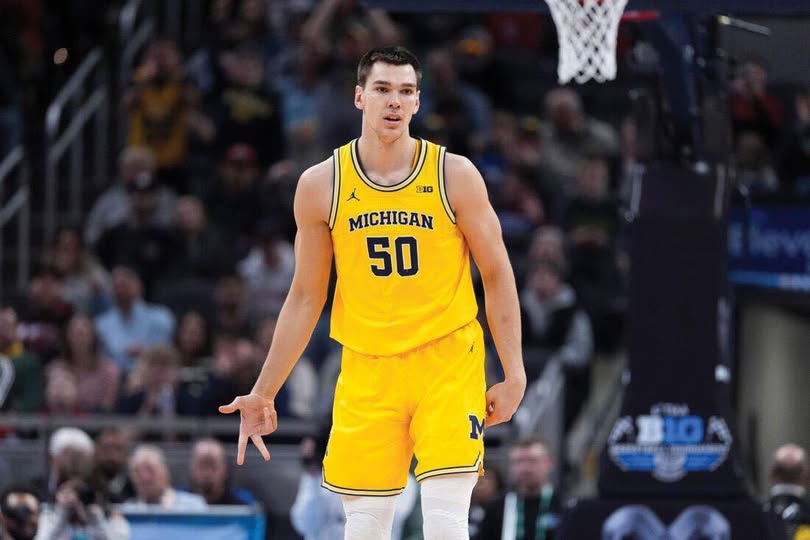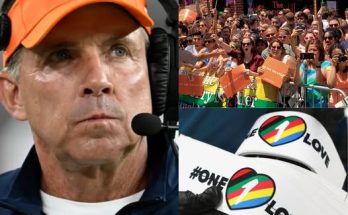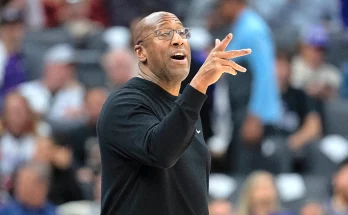The Los Angeles Lakers, long known for making headline-grabbing moves in free agency and at the trade deadline, now find themselves on the clock with a less glamorous—but still crucial—decision looming: what to do with the 55th overall pick in the 2025 NBA Draft. According to updated projections, the Lakers are now expected to use that selection on Vladislav Goldin, the towering 7-foot-1 center out of Florida Atlantic. With limited roster spots, aging stars, and a front office under constant pressure to deliver championships, the question becomes clear: should the Lakers draft Goldin at 55, or trade the pick altogether?
At first glance, a late second-round pick might not appear significant in the larger scheme of things for a franchise that judges itself by banners in the rafters. However, history suggests otherwise. Many late selections have gone on to become vital contributors in the league—think Manu Ginóbili at 57, Isaiah Thomas at 60, and Nikola Jokić at 41. Especially for teams like the Lakers, who are typically capped out and in need of affordable, developing talent, these picks can become quiet game-changers if handled wisely. That brings us to Goldin, a player whose ceiling, floor, and fit with this Lakers squad are now under intense scrutiny.
Goldin, a product of Russia who carved out a formidable collegiate career at FAU, isn’t just some unknown seven-footer. He averaged double-digit points, rebounded at a high level, and showed serious rim protection instincts during his final season. His footwork improved significantly, and while he’s not a stretch-five in the modern mold just yet, his touch around the rim and improving free-throw stroke indicate room to grow offensively. He’s the kind of throwback big that still has a place in the league—especially if the team around him can cover his mobility limitations on defense.
So what exactly do the Lakers need? They’re in a complicated spot. With LeBron James approaching 41 years old and Anthony Davis already bearing a heavy load as both offensive cornerstone and defensive anchor, the Lakers are seeking size, youth, and long-term cost control. Christian Wood was inconsistent last year, Jaxson Hayes has yet to fully develop, and the rest of the frontcourt rotation is either aging or specialized. In that context, drafting Goldin could make a lot of sense. He wouldn’t be expected to start or even immediately crack the rotation, but he could be a project worth developing—especially under the guidance of an experienced staff and in a franchise culture known for maximizing value.
However, there’s another school of thought: trade the pick. The Lakers have rarely been patient with youth in the LeBron James era. Even promising talents like Brandon Ingram, Lonzo Ball, and Kyle Kuzma were either shipped out or sacrificed to bring in win-now veterans. With pressure from ownership, fans, and the weight of expectations looming, Rob Pelinka and the front office may see more value in flipping the pick for a future second, cash, or using it as a sweetener in a larger deal. After all, the Lakers are often linked to veteran names who may become available via trade—whether it’s fringe starters, 3-and-D wings, or another backup point guard to stabilize the bench unit.
That said, the 55th pick doesn’t carry a lot of standalone trade value. It’s unlikely to be the linchpin in landing a rotation-ready veteran unless it’s part of a multi-asset package. So unless another team is specifically interested in Goldin—or someone else projected to go in that range—the Lakers may be better served taking the player, stashing him overseas if necessary, and monitoring his development.
Still, there’s something to be said about keeping a pick just to use it. The Lakers have made an art of uncovering undrafted gems and late picks in recent years—Austin Reaves, Max Christie, and even Talen Horton-Tucker were seen as marginal prospects who turned into assets. Goldin could be next in line if given time and a clear development plan. He likely won’t play major minutes in year one, but as the roster evolves, he could grow into a reliable rim protector, rebounder, and pick-and-roll partner for whichever guards remain on the roster.
Another key factor is salary cap flexibility. With Davis on a long-term deal and LeBron potentially returning on a restructured contract, the Lakers will be seeking ways to fill out the roster without dipping too deep into luxury tax territory. The new collective bargaining agreement has made second-round contracts more appealing thanks to the two-way and Exhibit 10 mechanisms that allow for flexibility. Drafting Goldin would give the Lakers a cost-controlled player with upside, rather than signing a minimum-salary veteran whose ceiling may already be capped.
Let’s also not ignore optics. Fans want to see the team building not just for the present, but for the post-LeBron future. Drafting a 7-footer who was part of a wildly successful FAU squad during their Cinderella run could generate buzz and goodwill. He would be the kind of prospect fans could track and root for—especially if he starts making noise in Summer League or with the South Bay Lakers in the G League. The organization’s branding as one that can develop young talent would only grow stronger with another success story from a low pick.
Of course, this decision is not just about Goldin’s talent. It’s about how the Lakers envision the next 12 to 24 months. Is this team chasing one final title with LeBron and AD? If so, then the inclination might be to trade the pick or draft someone more NBA-ready, perhaps an older college player who can step into a rotation role immediately. If the goal is to slowly retool around Davis while keeping an eye on 2026 and beyond, then Goldin becomes a compelling developmental piece—someone who might start contributing just as the team transitions to its next core.


